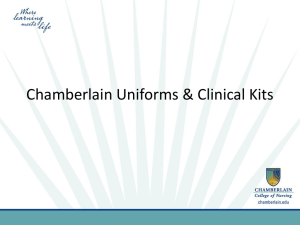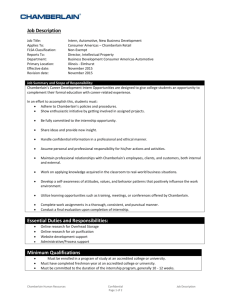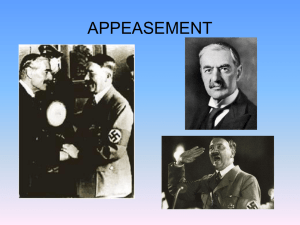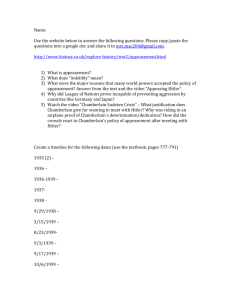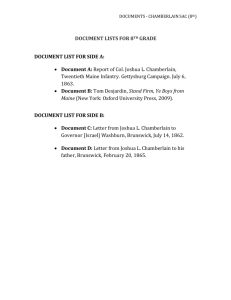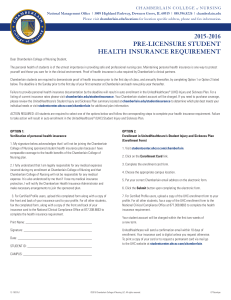Source Report - Bowdoin College
advertisement
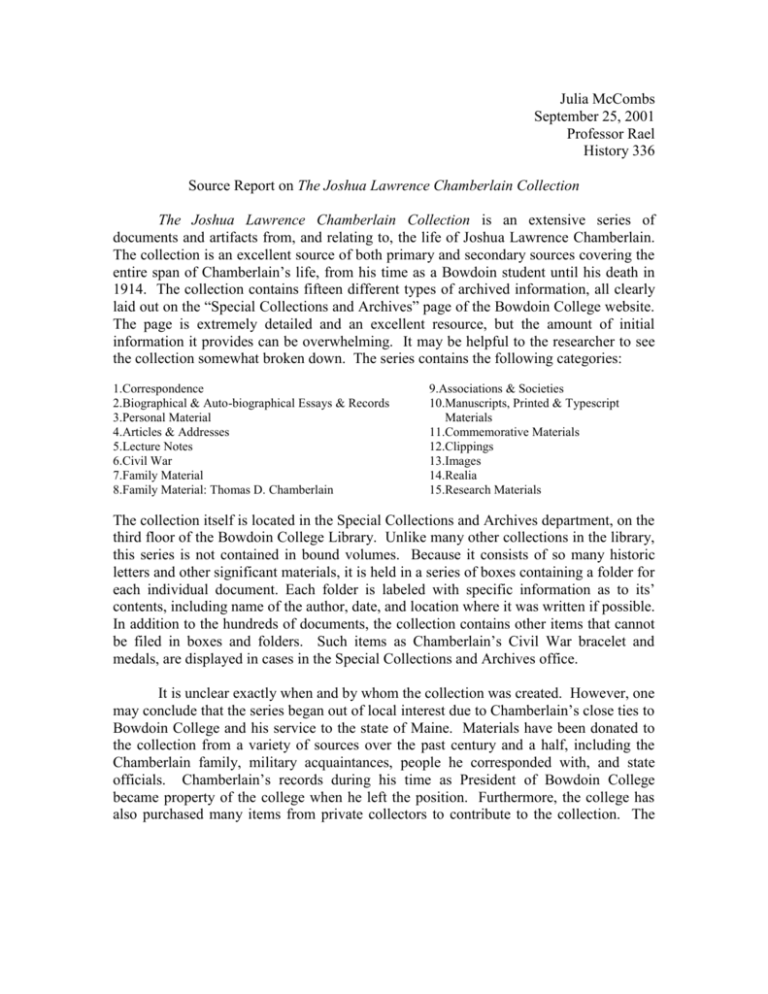
Julia McCombs September 25, 2001 Professor Rael History 336 Source Report on The Joshua Lawrence Chamberlain Collection The Joshua Lawrence Chamberlain Collection is an extensive series of documents and artifacts from, and relating to, the life of Joshua Lawrence Chamberlain. The collection is an excellent source of both primary and secondary sources covering the entire span of Chamberlain’s life, from his time as a Bowdoin student until his death in 1914. The collection contains fifteen different types of archived information, all clearly laid out on the “Special Collections and Archives” page of the Bowdoin College website. The page is extremely detailed and an excellent resource, but the amount of initial information it provides can be overwhelming. It may be helpful to the researcher to see the collection somewhat broken down. The series contains the following categories: 1.Correspondence 2.Biographical & Auto-biographical Essays & Records 3.Personal Material 4.Articles & Addresses 5.Lecture Notes 6.Civil War 7.Family Material 8.Family Material: Thomas D. Chamberlain 9.Associations & Societies 10.Manuscripts, Printed & Typescript Materials 11.Commemorative Materials 12.Clippings 13.Images 14.Realia 15.Research Materials The collection itself is located in the Special Collections and Archives department, on the third floor of the Bowdoin College Library. Unlike many other collections in the library, this series is not contained in bound volumes. Because it consists of so many historic letters and other significant materials, it is held in a series of boxes containing a folder for each individual document. Each folder is labeled with specific information as to its’ contents, including name of the author, date, and location where it was written if possible. In addition to the hundreds of documents, the collection contains other items that cannot be filed in boxes and folders. Such items as Chamberlain’s Civil War bracelet and medals, are displayed in cases in the Special Collections and Archives office. It is unclear exactly when and by whom the collection was created. However, one may conclude that the series began out of local interest due to Chamberlain’s close ties to Bowdoin College and his service to the state of Maine. Materials have been donated to the collection from a variety of sources over the past century and a half, including the Chamberlain family, military acquaintances, people he corresponded with, and state officials. Chamberlain’s records during his time as President of Bowdoin College became property of the college when he left the position. Furthermore, the college has also purchased many items from private collectors to contribute to the collection. The most recent additions to the collection are Chamberlain’s bracelet and “Deathbed Letter,” both acquired in the 1970’s.1 A great number and variety of people appear in The Joshua Lawrence Chamberlain Collection. He corresponded with most frequently with members of his family, especially his wife, Fanny. There are also numerous letters to military officials, politicians, and public figures. For example, the collection contains correspondences with such as Ulysses S. Grant, Robert Edwin Peary, and Calvin Ellis Stowe. 2 There are also many letters to ordinary citizens whom he met and shared interests, or disputes with, during his life. As mentioned above, the collection is organized by type of document, or in some cases, a specific time in Chamberlain’s life, such as the “Civil War” section. Within each category, the materials are arranged chronologically in carefully labeled individual folders. The number of folders varies greatly among the categories, the largest being the “Correspondence” set, containing 687 documents. To access The Joshua Lawrence Chamberlain Collection, the researcher should start at the Special Collections and Archives web-page. The site provides a brief biography of Chamberlain, generally describes contents of the categories into which all the materials are organized. There is also an electronic link to the more detailed “container list,” which provides the subject and other basic information about every document in the collection. For example, in the “Correspondence” category, the container list tells the researcher the date and both the sender and recipient of each letter. The container list for the “Family Material” section is an inventory of, among other things, financial records, schoolwork, poetry, bills, and receipts. 3 While the collection is extremely well documented in this manner on the Special Collections and Archives webpage, there is still no search tool that allows the researcher to look for a specific word, subject, or theme without reading through the entire container list. The container list on the website can be considered a “finding aid” because it lists the collection’s contents, but it has no search capabilities. One approach that the researcher may find useful is to narrow his or her focus to a particular time frame and then begin looking through the categories to find material. This way, the historian can follow along chronologically until he or she finds the general time frame in the category they desire to study, and then can begin sorting through the abundant material. The Joshua Lawrence Chamberlain Collection can answer almost any question about Joshua Chamberlain’s life that one seeks to ask. If the question is not solved by studying the collection, it will surely provide the researcher a great deal of background information on the man, and point them in a direction to continue their research. The collection spans his entire life and all the factors in it, from his education, to military service, his career as Governor of Maine, time as President of Bowdoin College, and 1 Ian Graham, Special Collections Librarian, Special Collections and Archives, Bowdoin College Library, 20 September, 2001. 2 Joshua Lawrence Chamberlain Collection, Special Collections & Archives, Bowdoin College Library. 3 Joshua Lawrence Chamberlain Collection, Special Collections & Archives, Bowdoin College Library. 2 extensive insight into his family life. Original copies of correspondences, lectures, speeches, and manuscripts provide the researcher access to Chamberlain’s interests and own thoughts on a wide range of topics over his lifetime. Secondary sources such as biographies, commemorative speeches and newspaper articles, also show what other people, including Chamberlain’s contemporaries, thought about him. The collection is an invaluable resource to anyone researching any aspect of Joshua Lawrence Chamberlain’s life. 3

